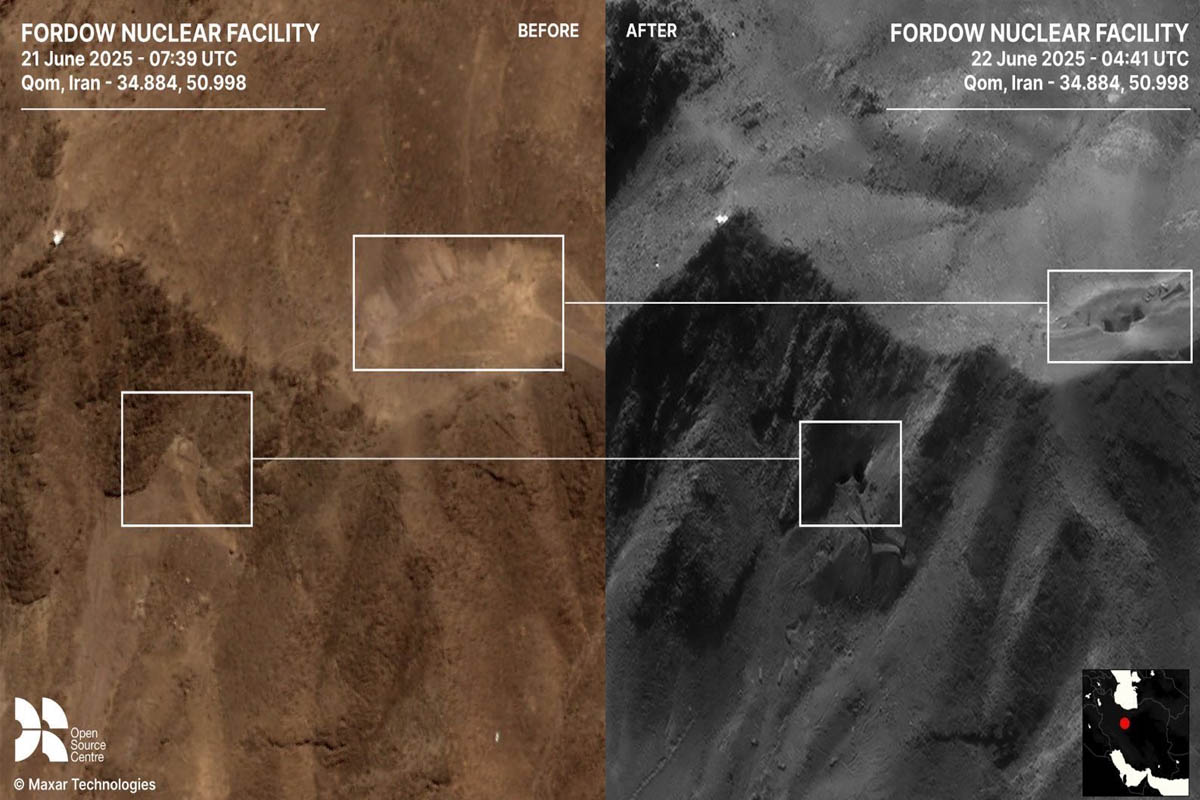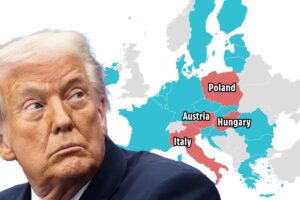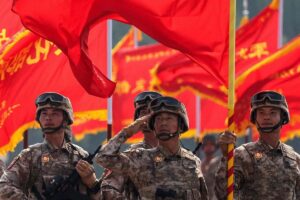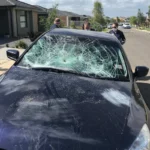What satellite imagery before and after the US strike reveals is not a classic blast crater, but a subsidence crater—a subtle depression caused by an underground collapse. This is the Crater of Deception: Satellite images show Iran’s strike missed its target.
A subsidence crater forms when an explosion underground causes the overlying material to sink into the void left behind. Unlike traditional craters, which are marked by debris scattered in all directions, subsidence craters often appear shallow and muted, with little visible surface disruption.
In military terms, this points to a failed or partial penetration—an outcome that could occur if:
- The bomb detonates in a shaft or soft medium (like gravel or soil),
- The munition fails to reach its target depth, or
- The explosion causes a structural collapse in a tunnel or void, rather than striking solid infrastructure.
Evidence from the Imagery
- Shallow, softened depression lacking sharp, recent blast markings
- No debris scatter or fragmentation field
- No signs of surface scorching or high-temperature damage
- Minimal damage to nearby structures
Such visual indicators imply that the bomb may have:
- Entered a tunnel or shaft—either real or part of a deliberate decoy system
- Caused collapse in a void without compromising core structures
- Missed critical depths or failed to deliver meaningful damage
If Iran engineered layers of voids or “camouflets”—deceptive targets designed to absorb impacts—the strike may have landed exactly where Iran intended it to.
Even in the case of real tunnel collapse, redundancy in infrastructure and specialist engineering crews could likely restore functionality within weeks.
The Strategic Implication
Rather than showcasing US strike precision, this crater may expose the limits of American intelligence and bunker-busting capability, or worse, a deliberate trap set by Iran.
Bottom Line: A subsidence crater does not confirm a successful hit—it may instead signal a failed deep penetration or a masterstroke in strategic deception by Tehran.












